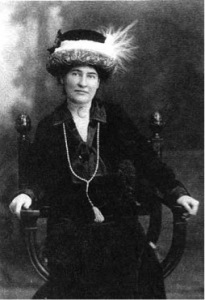For Jennifer Soule on her birthday, the anniversary of the 1888 Children’s Blizzard.
Brrr! With all the harsh winter weather spreading across the country, I can’t help but think of a classic winter scene in Willa Cather’s 1918 novel, My Ántonia (accent on the first syllable).
Set in the fictional town of Black Hawk, Nebraska, in the late 19th century, My Ántonia brings to life the experience of immigrants who settled the prairie. The third volume in her “prairie trilogy” (the first two being O Pioneers! [1913] and
[1915]), My Ántonia is told from the perspective of Jim Burden, who is ten years old and recently transplanted from Virginia to Nebraska at the beginning of the tale. He tells the story of Ántonia Shimerda, the daughter of Bohemian immigrants to Nebraska. (Like her male narrator, Cather was also born in Virginia, in Back Creek near Winchester, and moved to Red Cloud, Nebraska, when she was ten.)
After graduating from the University of Nebraska, Cather (1873-1947) left for the East Coast, where she worked as a journalist. While in Boston, she met the woman who would become her literary mentor – Sarah Orne Jewett, the author of The Country of the Pointed Firs (1896). From Jewett, Cather learned to write what she knew, to write about the land and the place that had formed her. For Jewett, this was coastal Maine; for Cather, it was the great prairie. Inspired by her friendship with Jewett, Cather turned from writing nonfiction and journalism to penning fiction. She was 40 years old.
My Ántonia is a great example of what Cather called “the novel démeublé” – the unfurnished novel. Spare and uncluttered, the book captures the sense of the prairie’s great expanse. No need to write long, flowery descriptions: just simple words on the page evoke the stark realities of pioneer life. You’ll hear that when you listen to my reading of the excerpt about the Shimerda’s first winter in Nebraska. (Check it out in the “Listen” box below!)
Want to know more about Cather? (There’s so much to learn – I’ve barely skimmed the surface!) Visit the Willa Cather Archive, where you’ll find free online texts of Cather’s books as well as lots of her nonfiction work. You’ll also want to stop by the Willa Cather Foundation website. Best of all? Check out this short silent movie clip of Cather (filmed in the 1920s). And if you can’t get enough, contemporary South Dakota writer Kathleen Norris offers an insightful essay on Cather, with special attention to My Ántonia.
Want to know more about the settling of the prairie? (I know my mom does!) Check out PBS’s “Death of the Dream: Farmhouses in the Heartland” and the Library of Congress’s American Memory Project on “Prairie Settlement: Nebraska Photographs and Family Letters, 1862-1912.”
Ready to read My Ántonia? You can’t go wrong with this University of Nebraska edition – a hard copy will let you get warm and cozy even as you’re reading about the fierce prairie winters. But if you can’t wait for your hard copy to arrive, check out the free Gutenberg text – and if you want to delve more deeply, the annotated scholarly edition (free and online!) is a must.
Join me this week on Pinterest as I pin images and resources related to Willa Cather. Take a look around at all my boards – or go straight to “My Favorite Books” board for Willa Cather treats.
And don’t forget to leave a comment on this post! If you subscribe to the weekly StoryWeb email and leave a comment here, you’ll be entered into a monthly drawing to win a StoryWeb T-shirt.
Podcast: Play in new window | Download
Subscribe to StoryWeb in iTunes.Subscribe to StoryWeb in Stitcher.
Image credit: Willa Cather, c. 1912, wearing a necklace from Sarah Orne Jewett. By Photographer: Aime Dupont Studio, New York [Public domain], via Wikimedia Commons.
